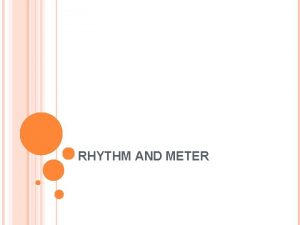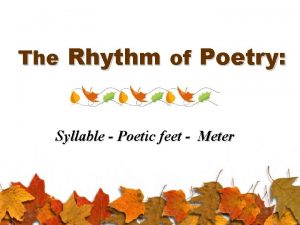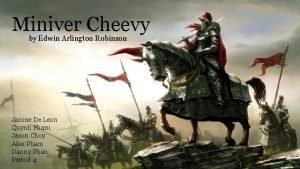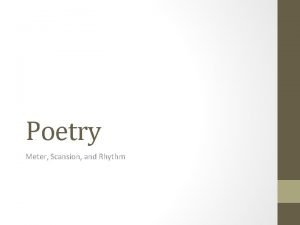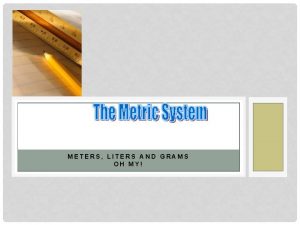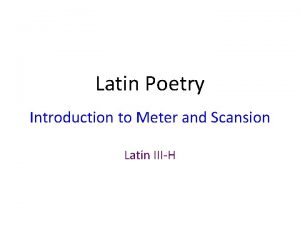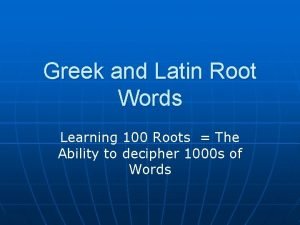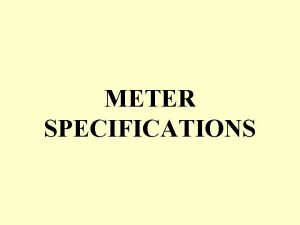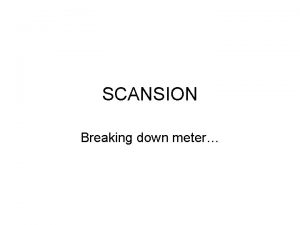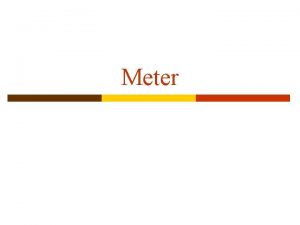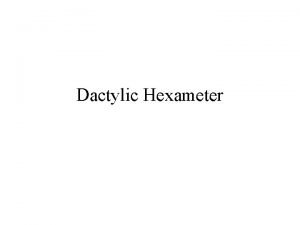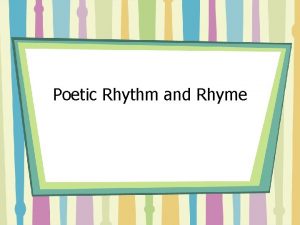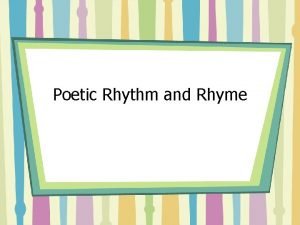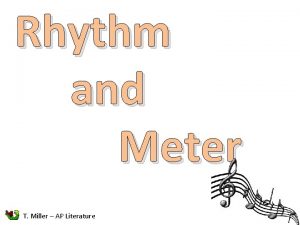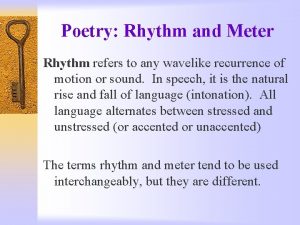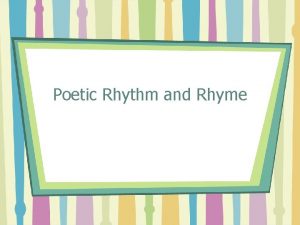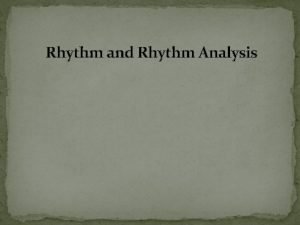RHYTHM AND METER What is Rhythm What is











- Slides: 11

RHYTHM AND METER

What is Rhythm? What is rhythm in poetry? Think of a song you like. What is it about that song that makes you tap your feet or want to dance? It is the rhythm of the song. In a similar way, all poems that are not written in free verse have rhythm, or a beat, as well. We also call that beat 'meter. ‘ Rhythm is expressed through stressed and unstressed syllables. Take the word, “poetry, ” for example. The first syllable is stressed, and the last two are unstressed, as in PO-e-try.

Types of Meter There are five main types of beats, or meter, that are used in poetry. However we will only concentrate on one. Iambic -- the Iamb is a pattern of one unstressed syllable followed by one stressed syllable, as in the word: en-JOY.

Why Should You Care? Many poets use rhythm and meter to create a deeper meaning behind their work, such as the two we will be looking at today in class. William Shakespeare (whom we will be studying soon) wrote all of his plays in iambic pentameter, which is a pattern of five stressed and five unstressed syllables.

Example of Iambic Pentameter “But soft! what light through yonder window breaks? / It is the East and Juliet is the sun. ” Five stressed words/syllables – soft, light, “yon -, ” “win-”, breaks Five unstressed words/syllables – but, what, through, “-der, ” “-dow”

“My Papa’s Waltz” If you examine the poem closely, its meter is also iambic. However, Roethke uses alternating six and seven syllable lines. Waltz time signature.

“Susie Asado” One thing we can all agree on is that this poem makes no freaking sense. The good(? ) news is that it’s not supposed to. Stein wrote her poem focusing not on what the words themselves mean, but how they sound.

Flamenco Dancers Susie Asado was a flamenco dancer. Flamenco is a bit like step – it’s not only about how your body moves, but also about the rhythm that you’re making with your hands and feet. The rhythm of the words that Stein uses are supposed to mimic the rhythm of Susie Asado’s feet as she dances.

What does this have to do with Shakespeare again? Much like our two example poets did, Shakespeare uses rhythm and meter purposefully in his work. Remember that Shakespeare wrote plays, and someone had to memorize all those lines. By writing in Iambic Pentameter, Shakespeare made it easier for the actors in his troupe to do their job.

Quick! Name all fifty states in alphabetical order! Really hard, right? How many of you remember this song from elementary school? I learned that song in the fourth grade – and I still remember at least half of it.

Rhythm Helps with Memorization Putting information in a song helps us remember it. That’s why so many companies use jingles in their advertisements. Can you think of a commercial where you’ve memorized a random phone number or product information because it was included in a song? Shakespeare used iambic pentameter for the same reason.
